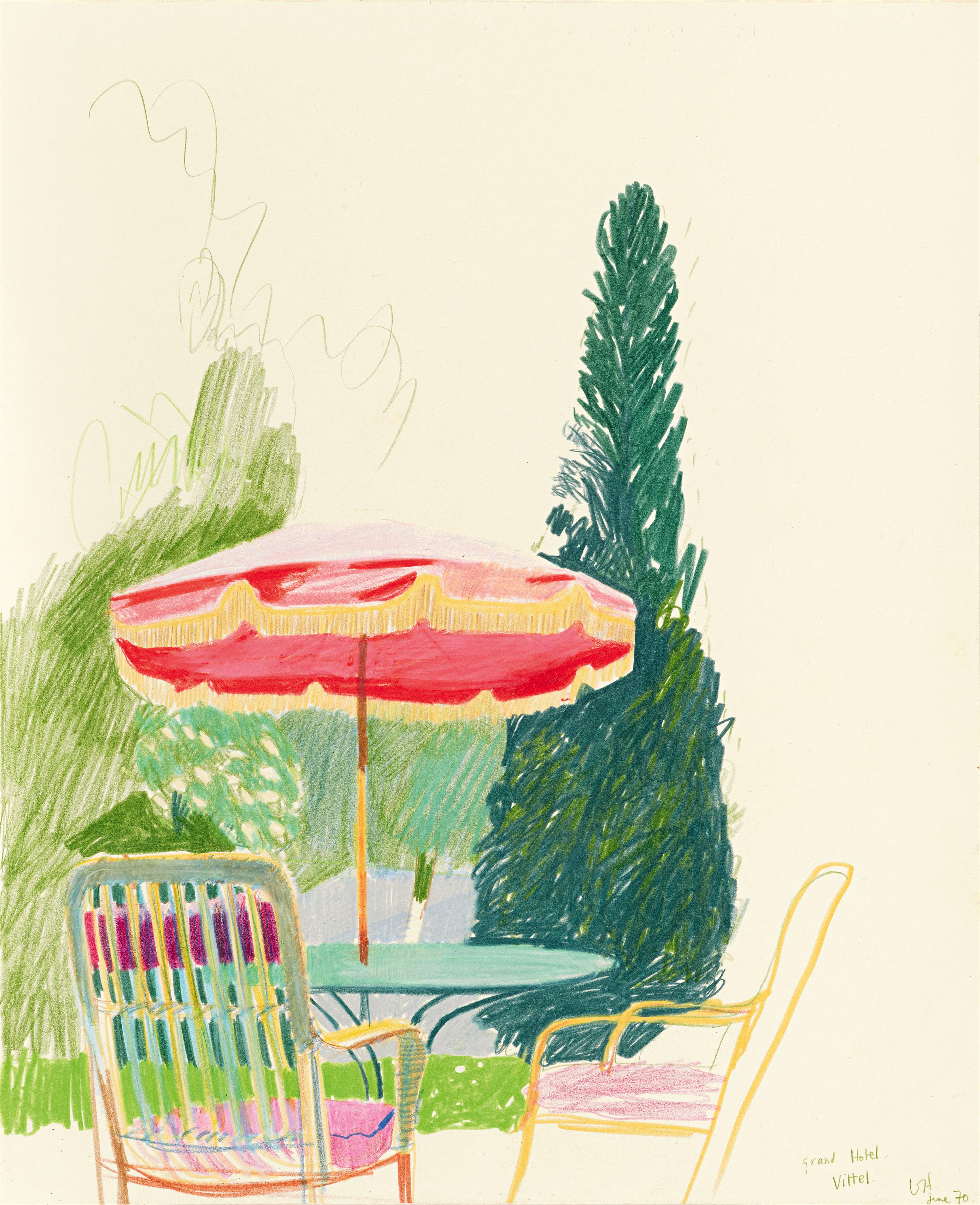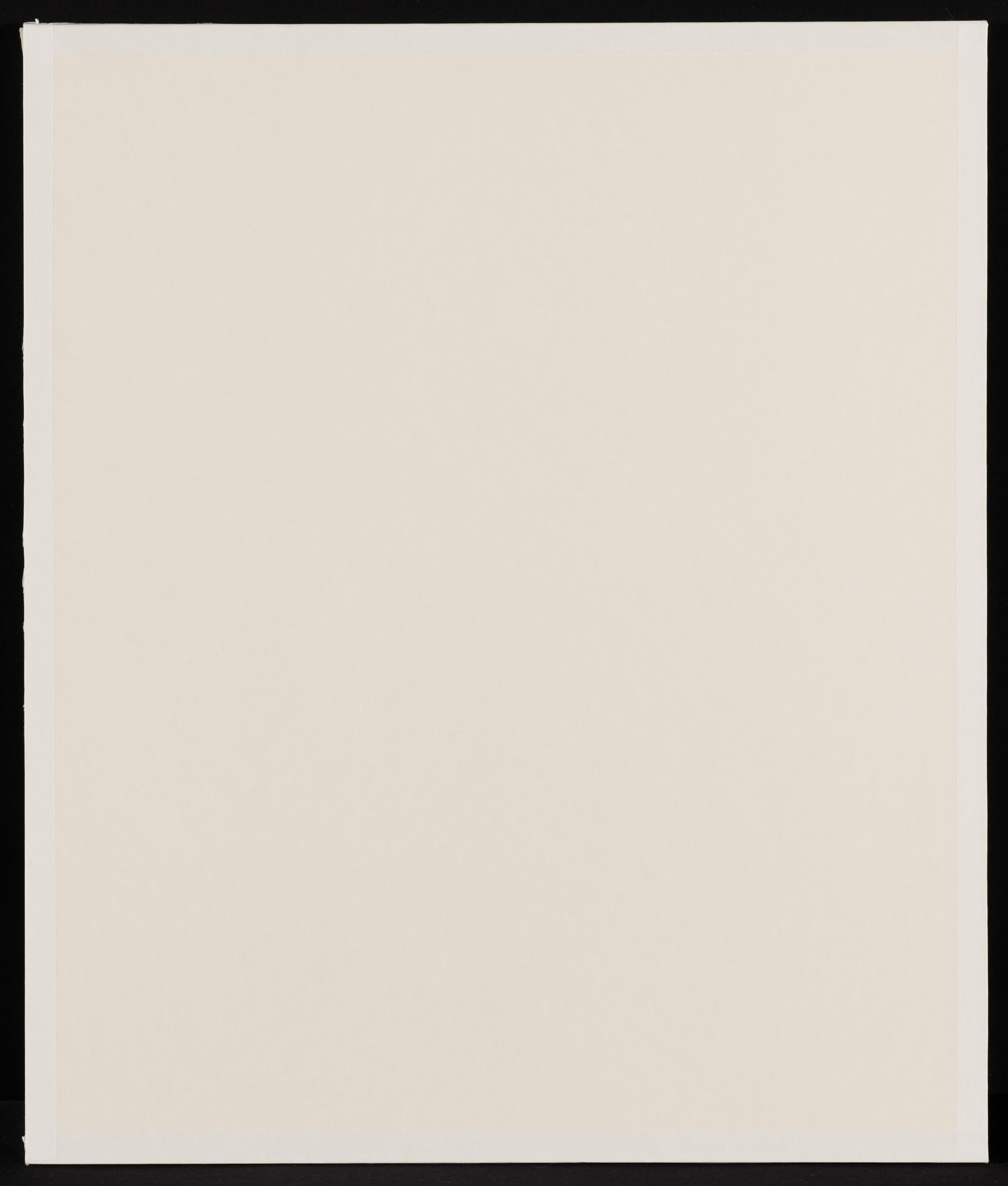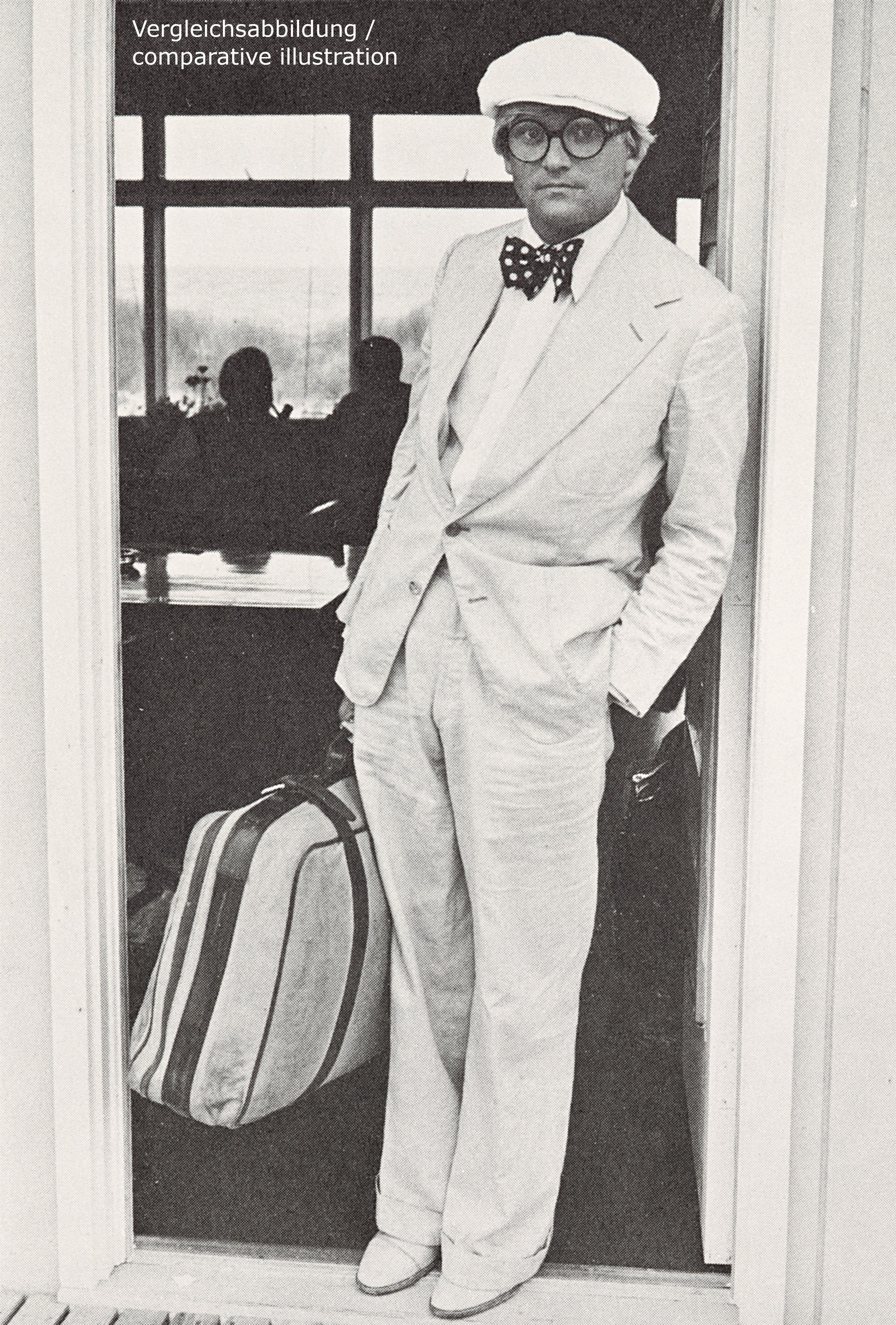David Hockney
Grand Hotel Terrace, Vittel
1970
Coloured pencil and wax crayon on card. 43.2 x 35 cm. Framed under glass. Monogrammed, dated and titled 'Grand Hotel, Vittel. DH june 70'.
In the 1960s, David Hockney became known as a dazzling figure of “Swinging London” and chronicler of the “Californian Way of Life”. Yet as a painter, graphic artist, photographer, and stage designer with references to British Pop Art, he refused to be categorised as belonging to any of the 20th century’s styles. Hockney also loved variety in his choice of places to live and work – after years in London and California, he spent a long period of time in Europe in the early 1970s, mainly in France, and later in Morocco and Japan.
The coloured drawing “Grand Hotel Terrace, Vittel” originated in the luxury hotel of the same name in the Départment Vosges south of Nancy. Using coloured wax chalks, he drew a table with parasol, 2 wicker armchairs and a park with pool in the background. As Hockney described a similar painting “Contre-jour in the French Style” from 1974, the paintings created in France are first and foremost a homage to French culture and to the country in which he lived from 1973-1975. “Grand Hotel Terrace, Vittel” is French in appearance due to the furniture, the traditional chairs, the dainty metal table, and the fringed parasol, but also due the colour scheme of delicate rosé, coral, and the many shades of green. The backrest of the chair in the foreground invites the viewer to take a seat and keep the painter company.
The work does indeed pertain to a series of chalk drawings from the early 1970s, all of which have Hockney’s places of residence and holidays as their theme and were created in Marrakesh, Calvi, Vichy, Nice, or Kyoto. The series summarised under the title “Travels” always shows luxurious yet depopulated spaces or squares, often furnished with a parasol, which is the only motif that casts a shadow on this perfect world. He often resorted to wax chalks as a painting technique during this period and created the enchanting drawings which had long since ceased to serve him merely as a preparation for an oil painting.
As he himself repeatedly emphasised, he loved travelling – also due to the local food, “I had fallen in love with Europe again in 1967; it had been four or five years since I travelled around. I’d been so full of America for five years, but coming back to Europe you realise it’s certainly more interesting to drive around than America. America is wonderful as landscape, but every time you pull into a restaurant you know what the menu’s going to be. The thing is I love glamour places. I love going to places that have glamour. So any place that’s new for me is good. I like to travel…“ (cited from: David Hockney. Travels with Pen, Pencil and Ink, London 1978, n.pag.).
Provenance
Kasmin Gallery, London; James Kirkman, London (each with adhesive label verso); Sotheby's, New York, 01.05.1991, lot 133; André Emmerich Gallery, New York (adhesive label verso) (1992); private collection, Belgium
Literature
Nikos Stangos (ed.), David Hockney by David Hockney, London 1976 , cat.no.322, p.234 with ill.;
Nikos Stangos, Pictures by David Hockney, London 1976, p.108 with ill.






